
THE ORIGINS OF THE HOUSE
"ACCEPT ONLY PERFECTION. ONLY MANUFACTURE WATCHES OF THE HIGHEST QUALITY."
In keeping with its watchword, which has today become the House motto, the Baume family laid the foundations for a family business that would go on to become Baume & Mercier. It all began in 1830 when Louis Joseph Baume opened a watchmaking counter in Les Bois, a village of the Canton of Berne in Swiss Jura. Four years later, his sons, Louis-Victor and Célestin Baume, registered the business under the name “Frères Baume, la Famille Louis Joseph.” Driven by their enthusiasm and skills, the company – and watchmaking in a larger sense – quickly developed through the creation of exceptional pieces featuring cutting-edge innovations.

Watchmaking counter, Les Bois, Swiss Jura

1840 - INTERNATIONAL EXPANSION
The Baume Brothers opened a branch in London, allowing the brand to expand throughout the British Empire and Far Eastern markets including India, Australia, and New Zealand. At the time, England was particularly attentive to chronometry, since exact time measurement provided strategic precision in both commercial and military maritime operations. This pioneering choice, reflecting the spirit of the House, would allow Baume & Mercier to become renowned for its watchmaking savoir-faire.

1851 - THE INTRODUCTION OF THE LÉPINE CALIBER IN THE JURA
The Baume company pioneered the introduction of the Lépine caliber in the Jura. This new movement structure profoundly improved the reliability, solidity, and appearance of watches. It quickly became widespread, making a considerable impact on the company’s prosperity, though the manufacture of the new movement required modifications in its production methods.

KEW OBSERVATORY
In the late 19th century, the House triumphed in the most exacting chronometry competitions, including the most prestigious among them: that of the Kew Observatory in England. The first time it participated in the Kew Teddington competition, in 1885, three of its Swiss-made watches placed in the top seven. The next year, four of its watches won awards. In 1887, the company achieved the highest score of the competition (85.1 points out of 100) with a split-seconds chronograph. In 1892, its keyless chronometer with tourbillon escapement swept the board, achieving a total score of 91.9 points. That set an all-time record that was only broken a decade later in 1903.

INTERNATIONAL RECOGNITION
From 1860 to 1910, the Baume House participated in the World’s Fairs of Paris, London, and Geneva, where it won ten Grands Prix and five gold medals. These awards acknowledge the most innovative and highest-quality products of their respective years.
THE '20-'30s: THE EARLY YEARS OF THE HOUSE
A FORTUITOUS ENCOUNTER
The House destiny, and its watchmaking vision, took a decisive turn in 1918 when William Baume – a talented, ingenious, avant-garde watchmaker – joined forces with Paul Mercier: a cosmopolitan aesthete with aristocratic mannerisms, a visionary with ties to the art world, and a skillful businessman. As soon as they met in 1912, the two men immediately struck up a friendship and a complementary companionship. On August 27, 1920, they founded “Baume & Mercier” in Geneva, initiating a dialog between watchmaking expertise and a passion for design that would be passed down through decades and successive collections. One man’s pragmatism was balanced by the other’s artistic sensibility, placing the emphasis on aesthetics through ultra-slim timepieces for men and jewelry watches for women.

William Baume and Paul Mercier
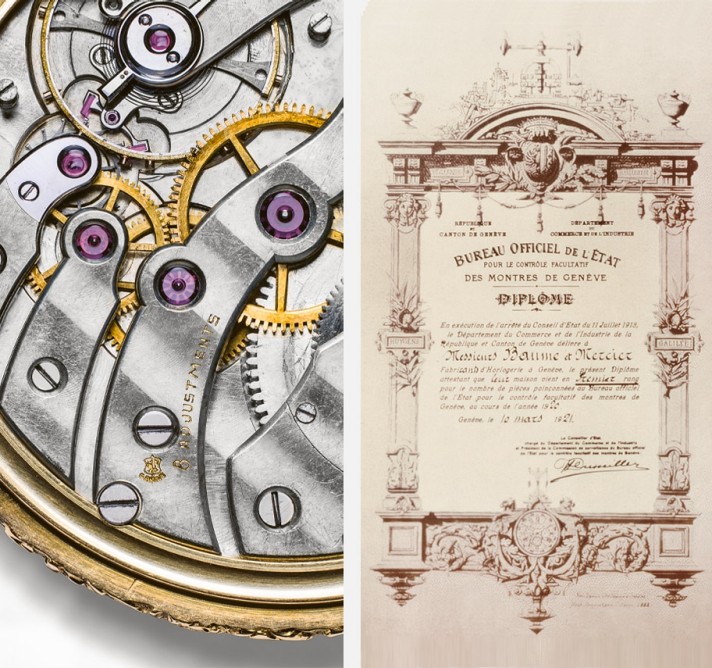
THE QUALITY SEAL
As soon as Baume & Mercier was founded, William and Paul oriented their production to high-end watches with contemporary allure. While the Brand was registered in 1920, the Department of Commerce and Industry of the Republic and Canton of Geneva issued a certificate on March 10, 1921 attesting that Baume & Mercier ranked first for the number of pieces stamped at the Official State Office during the year 1920.

ACCLAIM FOR JEWELRY WATCHES AND ULTRA-SLIM WATCHES
In July of 1920, Baume & Mercier timepieces met with great success at the Geneva watchmaking fair, eliciting enthusiastic reactions from the press. One journalist stated, “We should highlight the exposition of six-line jewelry watches and ultra-slim watches by Mr. Baume and Mr. Mercier of Geneva, Granges and Bienne. Their House offers a remarkable array of exquisite movements and small calibers.”
THE '40-'60s: TECNICAL AND AESTHETIC
THE LEGACY OF WILLIAM BAUME AND PAUL MERCIER IS CARRIED FORWARD
In 1935, William Baume retired from the House for health reasons, and Paul Mercier concluded his career two years later in 1937. However, the legacy of William and Paul was carried forward by two fresh faces at the House, Ernesto Ponti and Constantin de Gorski. Enesto Ponti, a Piémontese jeweler, took up the design of precious watches with the support of the many Ponti and Gennari branches in Lyon, Geneva, and Zurich. Constantin de Gorski was a brilliant intellectual and art lover who raised racehorses and threw spectacular receptions as a member of the café society of Geneva. While he would never be the director of Baume & Mercier, he played a major role in the company’s development as president.
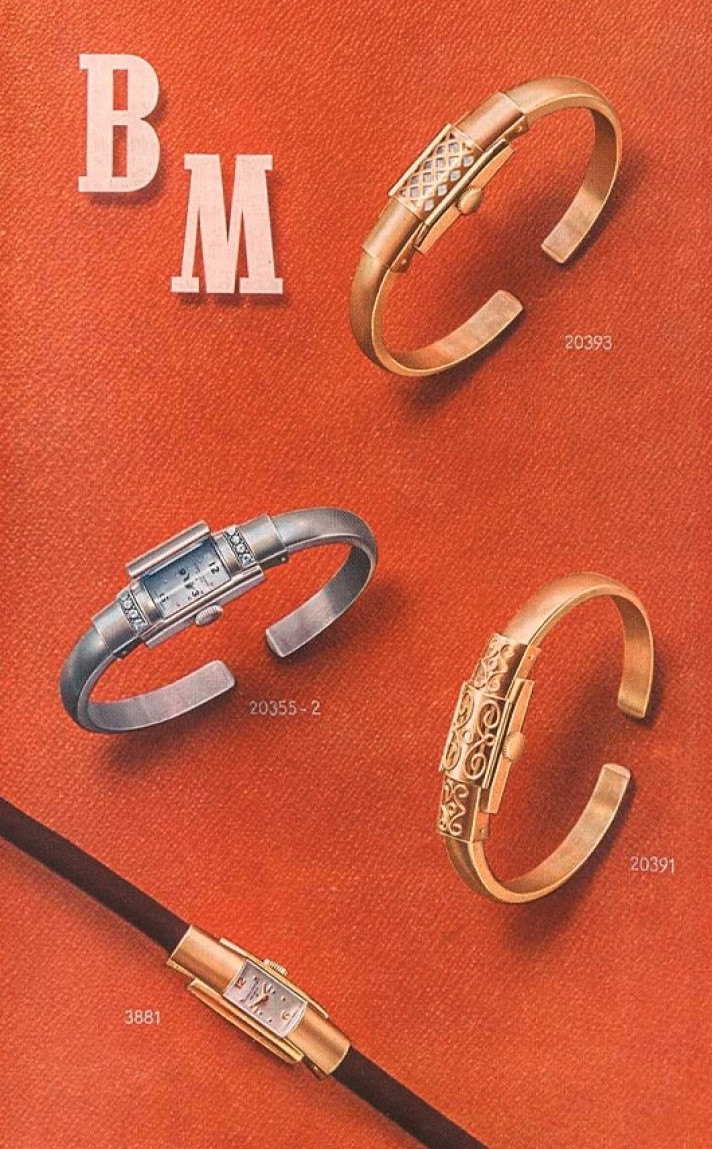
1946 - THE TRIUMPH OF THE MARQUISE
In the late ’40s, Baume & Mercier launched one of its great successes: the Marquise, a watch design that revolutionized women’s post-war watch fashion. Carried forward by this momentum, the Brand produced women’s watches of exquisite creativity and incredible modernity, proving that a ladies’ timepiece could be much more than just a miniaturized, somewhat oversimplified interpretation of a men’s watch. A technical achievement of its time in the service of jewelry watches, the Marquise featured a case linked by invisible hinges to the ends of the two curved bracelet links. Whether equipped with the Lépine caliber or nestled within a hunter case, whether plain or bejeweled, the Marquise was the epitome of the jewelry watch at the time. Released in several versions – gem-set or topped with an openworked dial cover –, it remained Baume & Mercier’s best-selling watch until the 1960s, establishing the Brand’s reputation in the field of ladies’ jewelry watches.
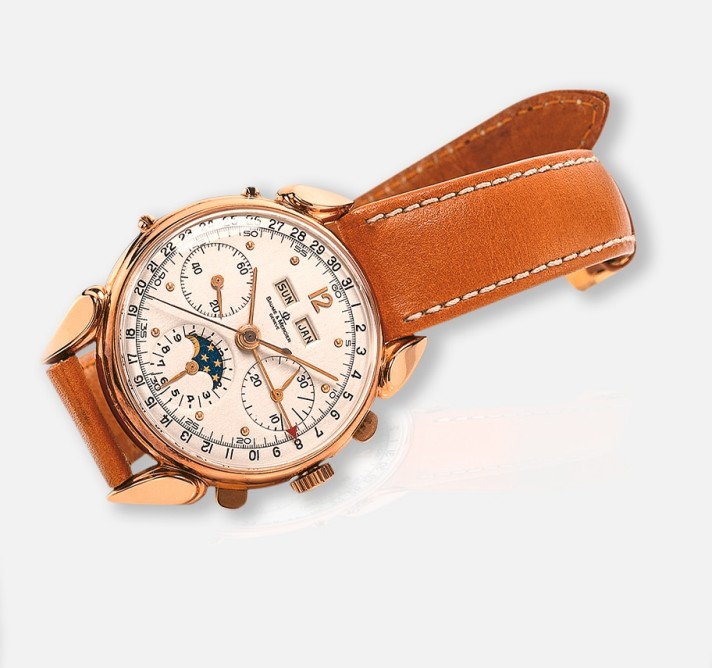
THE CHRONOGRAPHS
Throughout the 20th century, chronographs remained one of the great Baume & Mercier specialties. In 1952, Baume & Mercier acquired the C. H Meylan Watch Sa manufacture located in Le Brassus. Based on its solid reputation for crafting simple and complicated movements, as well as “extra, ultra, and exceptionally slim” calibers, Baume & Mercier ramped up its production and the reputation of its chronographs to meet the period’s high market demand.
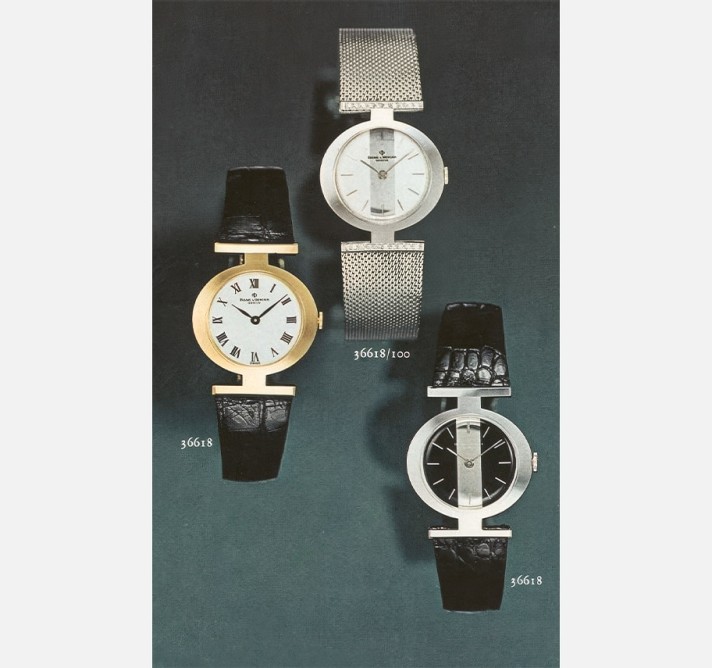
THE PHI AS A SYMBOL OF BALANCE FOR BAUME & MERCIER
When Baume & Mercier adopted the Greek letter Phi – symbol of the Golden Ratio, divine proportions, and natural balance – in 1964, the Brand solidly established the spirit of design as part of its DNA. Since then, the emblem has appeared on all the Brand’s pieces. Its shape watches, imbued with bold, unbridled creativity and visually assertive in design, follow the structural and stylistic principles that aspire to perfection. They are based on ideal proportions, precise lines, meticulous attention to detail, and a subtle harmony of materials and colors. A few years later, the House took inspiration from the emblem of perfection to introduce the Symbol collection. That was its first concrete application of the Greek letter Phi. Designed beginning in 1965 and sold for the first time in 1967, these watches remained in the Brand’s catalog until the mid-1990s. In the 2000s, the Design Studio became the embodiment of Baume & Mercier’s creativity, applying the notion of Golden Ratio in the development of its most emblematic pieces.
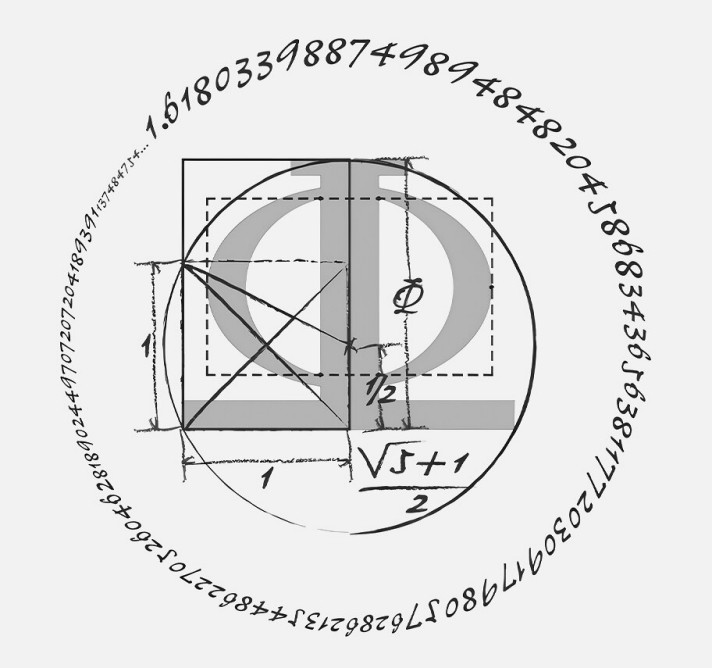
THE ’70S: CONTINUITY AND EXCELLENCE
AVANT-GARDE DESIGN AND THE PURSUIT OF PRECISION
Under the leadership of Ernest Stolz, followed by Jean-François Glauser, the House embarked on a decade of signature designs and consistently continued its pursuit of precision while remaining deeply loyal to its original essence.
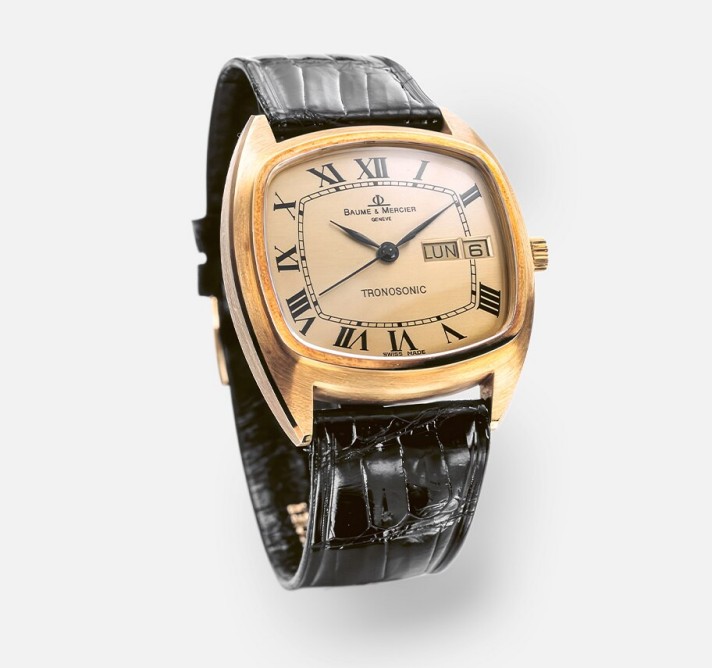
1971 - THE TRONOSONIC, THE ADVENT OF THE ELECTRONIC WATCH
In 1971, Baume & Mercier launched the Tronosonic collection. These models were equipped with a tuning fork movement, the predecessor of the quartz movement that would transform the watch industry a few years later. Once again, the Brand was demonstrating its pioneering spirit and its intention to equip its timepieces with the most advanced technology available, offering precision on a par with the best mechanical movements of the time.
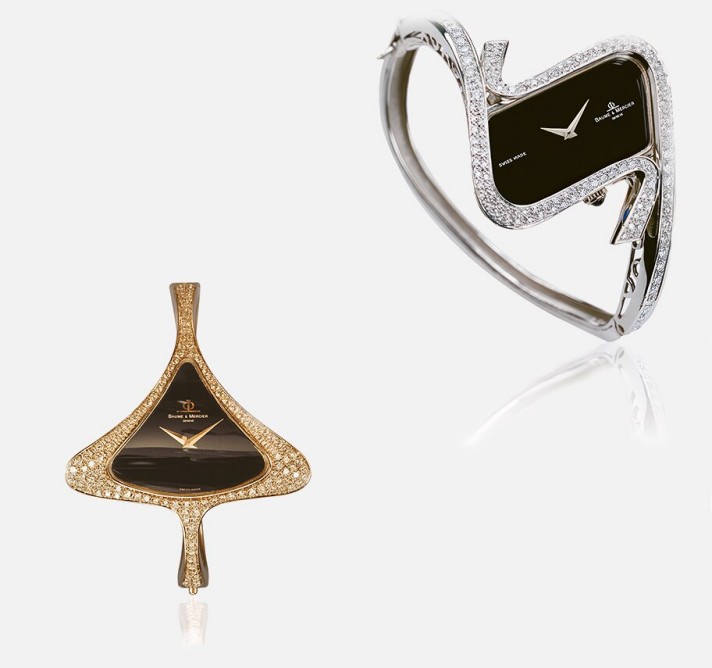
1972 - THE GALAXIE AND STARDUST, THE PEAK OF SHAPE WATCH DESIGN
As a cultural revolution was unfolding on Earth, mankind took its first steps on the moon. These were futuristic times, and the House – ever loyal to its identity – adapted to the codes of the time, launching a series of wildly bold watches. The Galaxie watch, more jewelry than timepiece, features an asymmetrical case with a design pared down to the extreme. The Stardust, adorned with 138 diamonds and an onyx dial, was awarded the prestigious Golden Rose of Baden Baden in 1973.
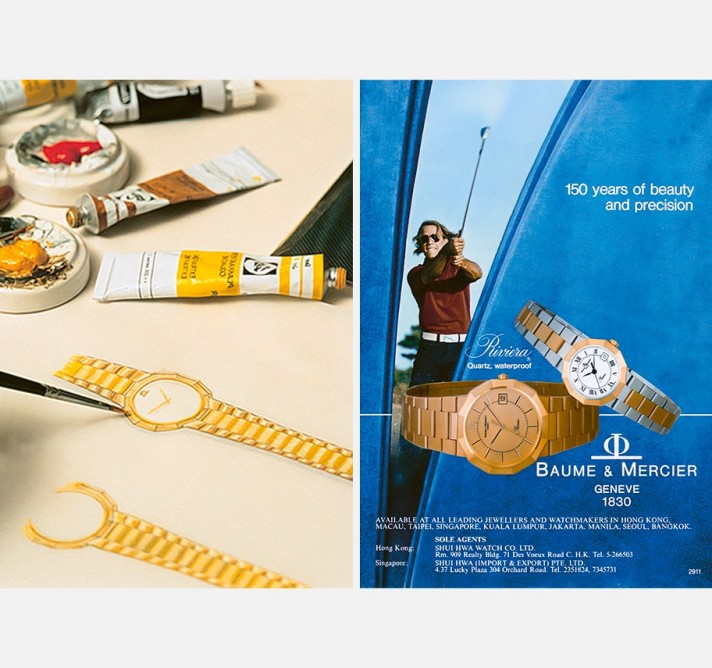
1973 - THE RIVIERA, SIGNATURE DESIGN
After developing the innovative technology of the Tronosonic in 1971, Baume & Mercier dropped a stylistic bomb in 1973. The unique design of the Riviera, created by Jean-Claude Gueit, is based on the idea of turning a circle into an unconventional shape by connecting the twelve numerals on the dial with straight-edged segments that delineate the outline of the case. With its emblematic name, evoking elegance and leisure, the Riviera won over a new clientele seeking avant-garde style, becoming the Brand’s flagship model for years to come. At a time when dress watches were invariably crafted in gold, Baume & Mercier initially opted for the strength and elegance of steel, to bring forth a watch that could go from the city to weekend sports. As the years went by, it brought forth gold and bicolor versions in addition to jeweled pieces.